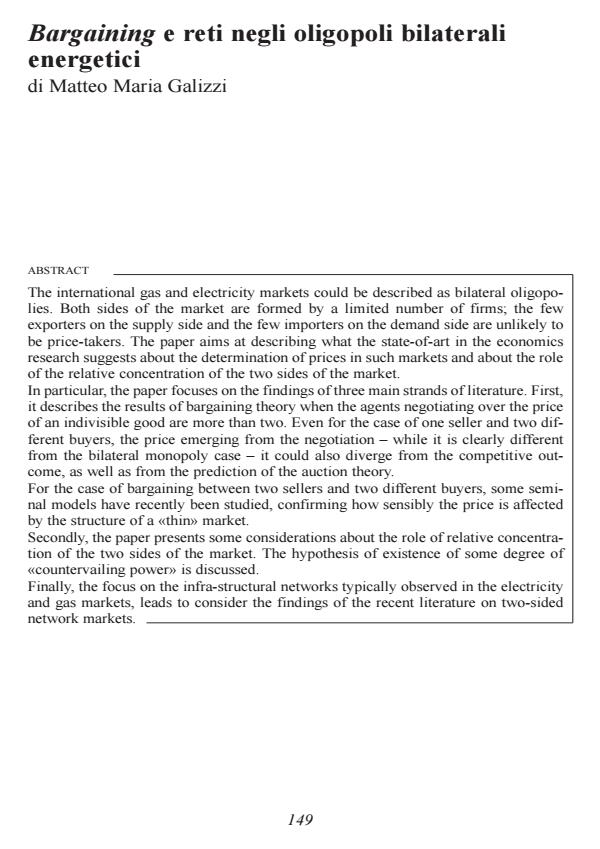Bargaining e reti negli oligopoli bilaterali energetici
Titolo Rivista ECONOMIA PUBBLICA
Autori/Curatori Matteo Maria Galizzi
Anno di pubblicazione 2004 Fascicolo 2004/2 Lingua Italiano
Numero pagine 18 P. Dimensione file 144 KB
DOI
Il DOI è il codice a barre della proprietà intellettuale: per saperne di più
clicca qui
Qui sotto puoi vedere in anteprima la prima pagina di questo articolo.
Se questo articolo ti interessa, lo puoi acquistare (e scaricare in formato pdf) seguendo le facili indicazioni per acquistare il download credit. Acquista Download Credits per scaricare questo Articolo in formato PDF

FrancoAngeli è membro della Publishers International Linking Association, Inc (PILA)associazione indipendente e non profit per facilitare (attraverso i servizi tecnologici implementati da CrossRef.org) l’accesso degli studiosi ai contenuti digitali nelle pubblicazioni professionali e scientifiche
The international gas and electricity markets could be described as bilateral oligopolies. Both sides of the market are formed by a limited number of firms; the few exporters on the supply side and the few importers on the demand side are unlikely to be price-takers. The paper aims at describing what the state-of-art in the economics research suggests about the determination of prices in such markets and about the role of the relative concentration of the two sides of the market. In particular, the paper focuses on the findings of three main strands of literature. First, it describes the results of bargaining theory when the agents negotiating over the price of an indivisible good are more than two. Even for the case of one seller and two different buyers, the price emerging from the negotiation while it is clearly different from the bilateral monopoly case it could also diverge from the competitive outcome, as well as from the prediction of the auction theory. For the case of bargaining between two sellers and two different buyers, some seminal models have recently been studied, confirming how sensibly the price is affected by the structure of a «thin» market. Secondly, the paper presents some considerations about the role of relative concentration of the two sides of the market. The hypothesis of existence of some degree of «countervailing power» is discussed. Finally, the focus on the infra-structural networks typically observed in the electricity and gas markets, leads to consider the findings of the recent literature on two-sided network markets.;
Matteo Maria Galizzi, Bargaining e reti negli oligopoli bilaterali energetici in "ECONOMIA PUBBLICA " 2/2004, pp , DOI: